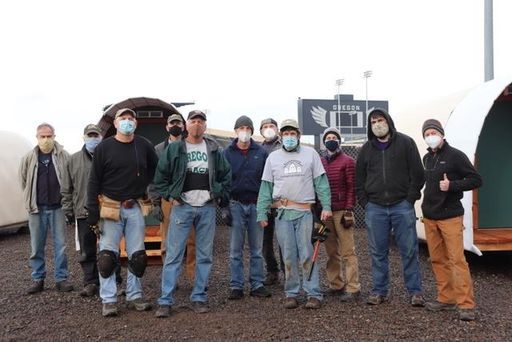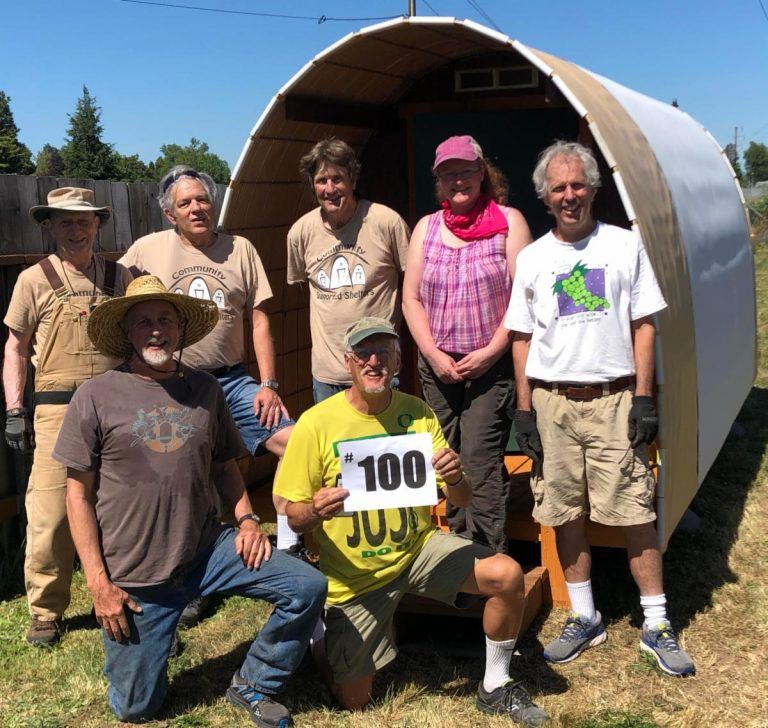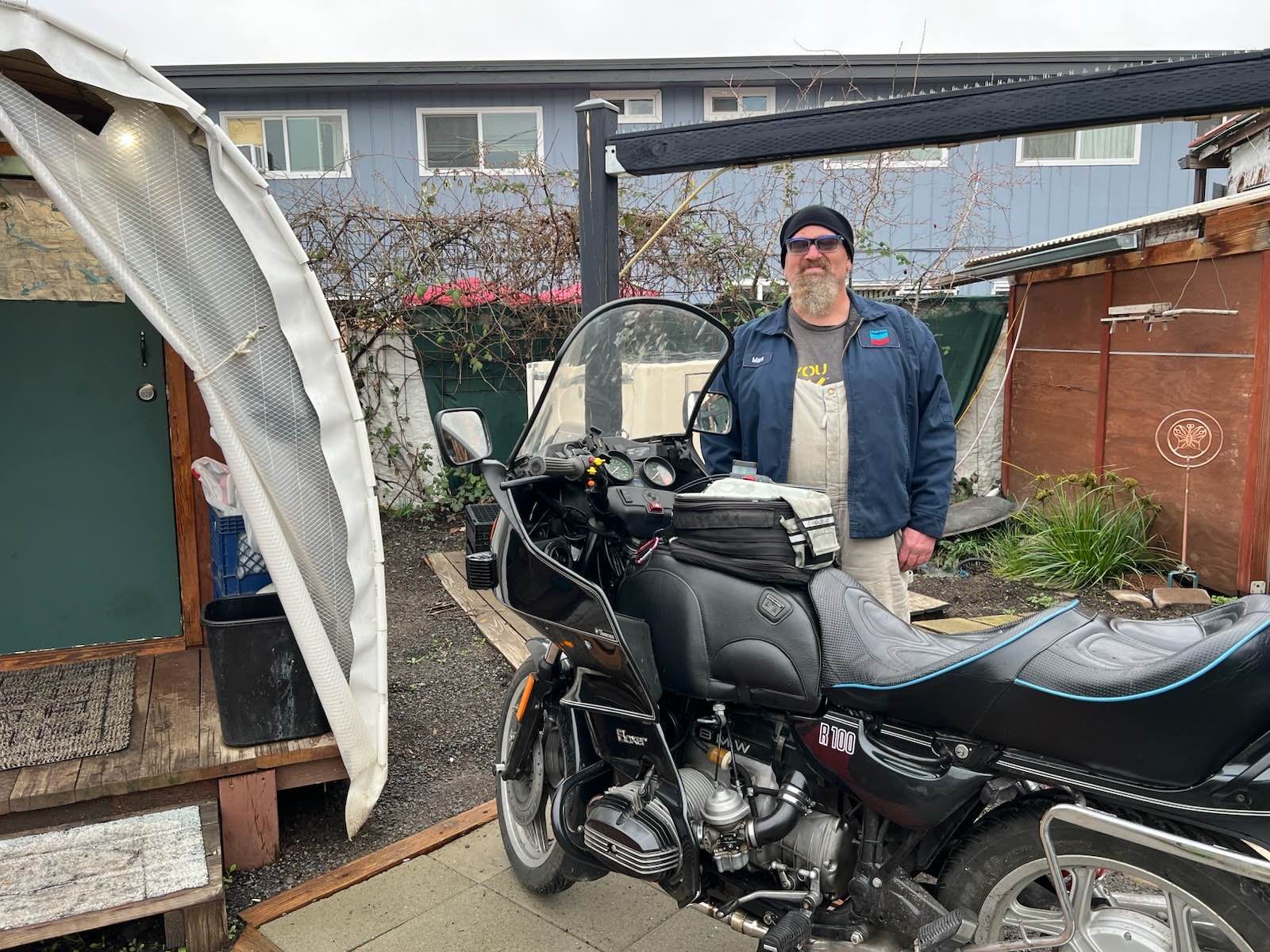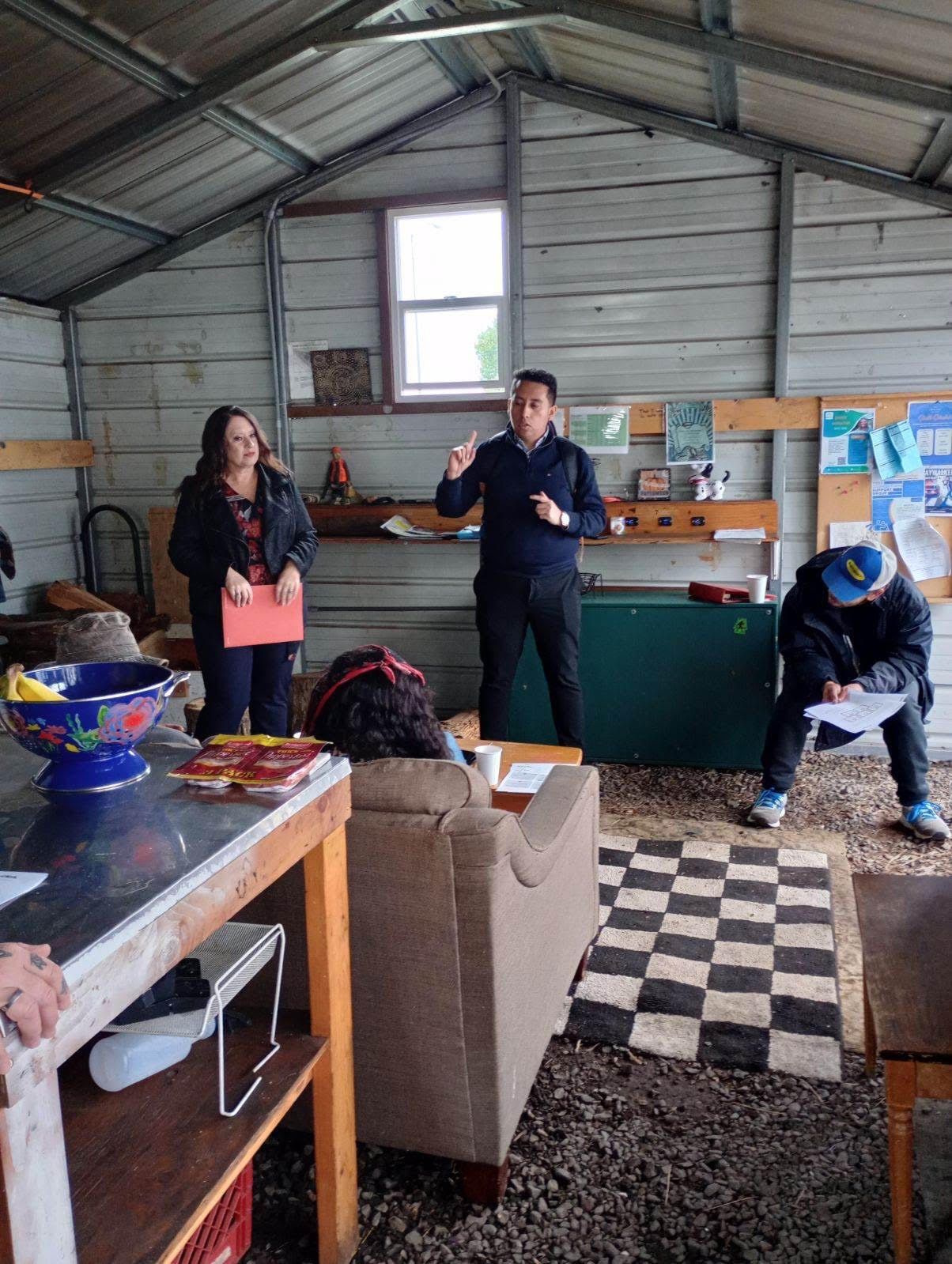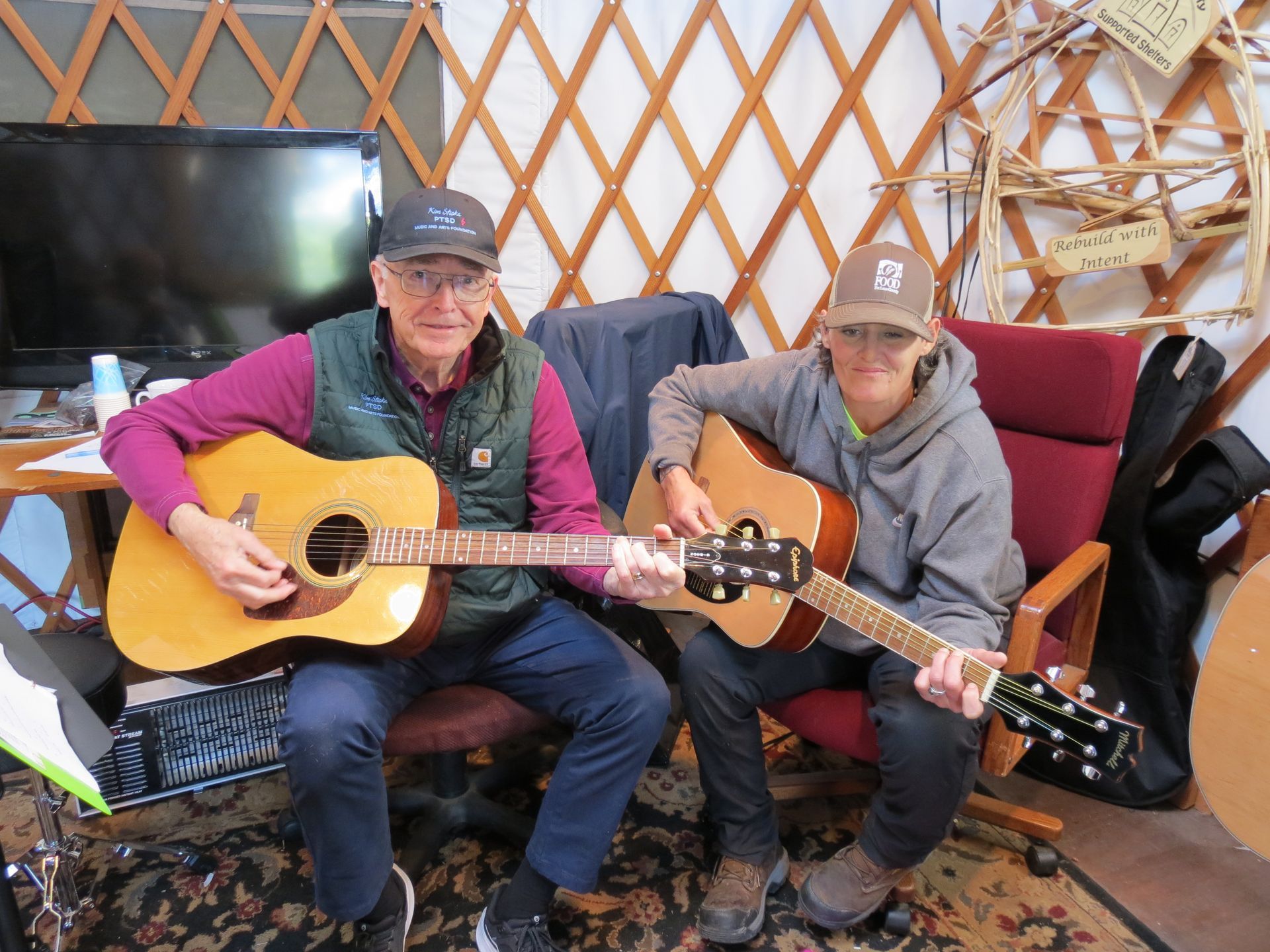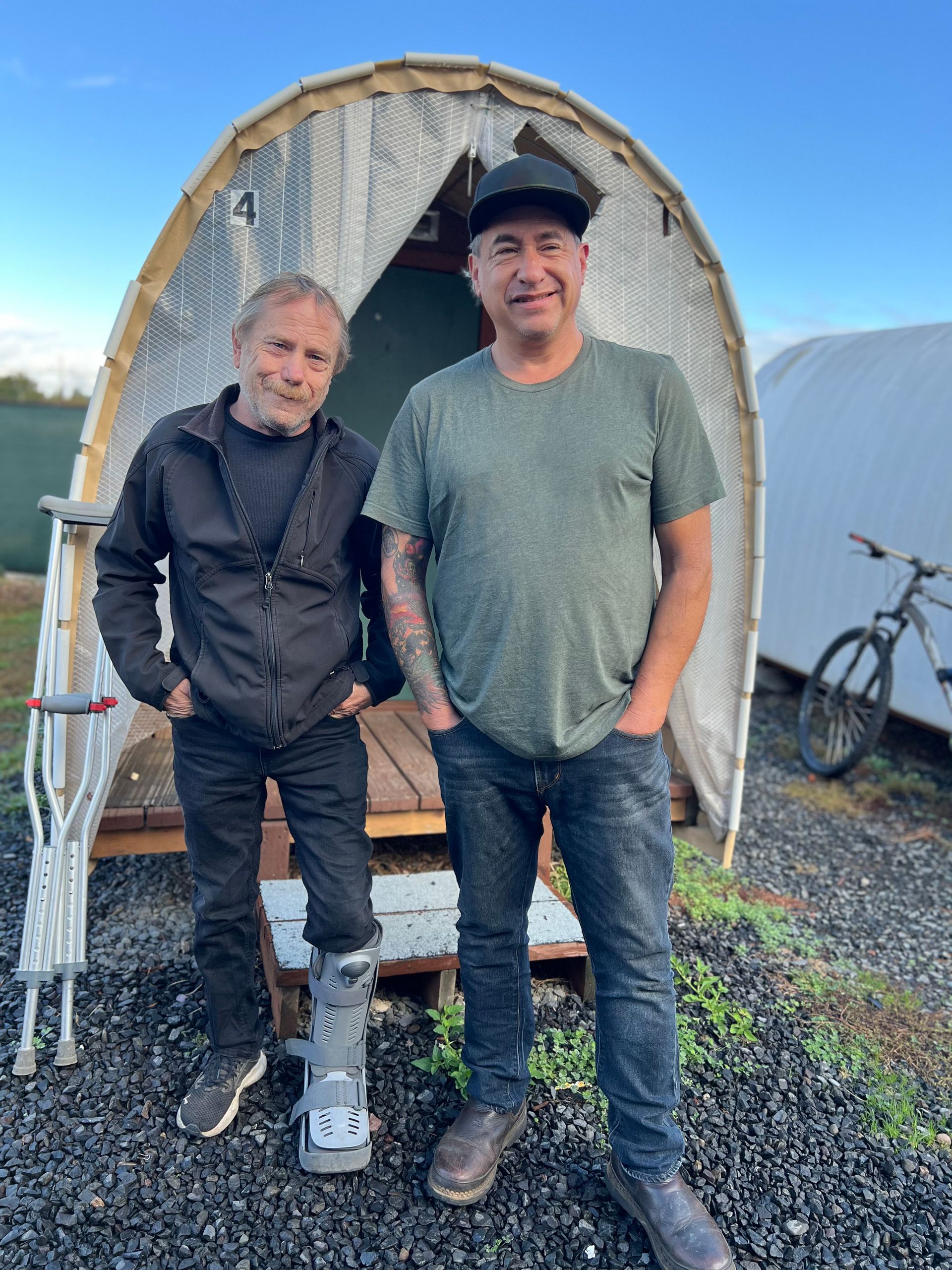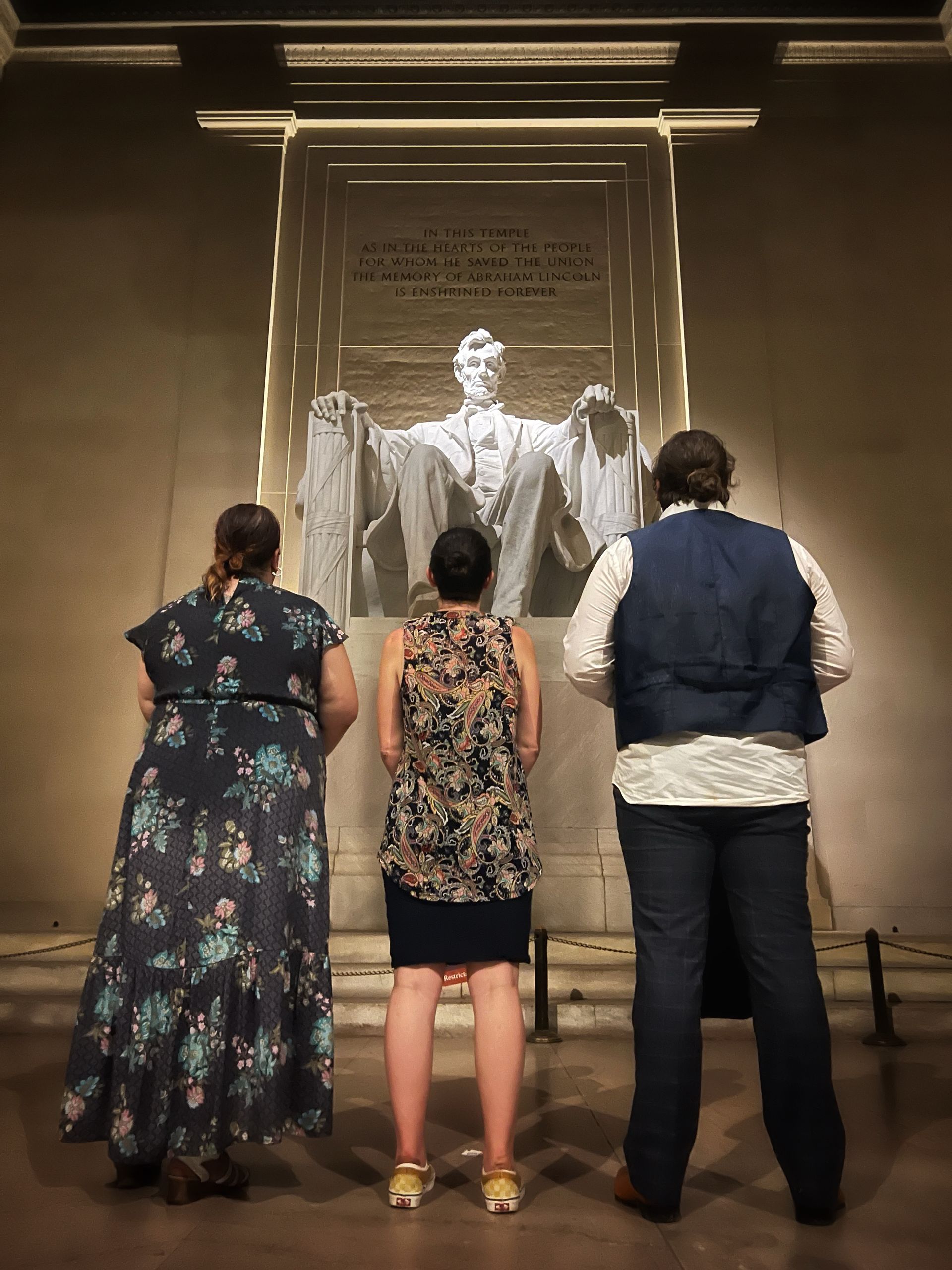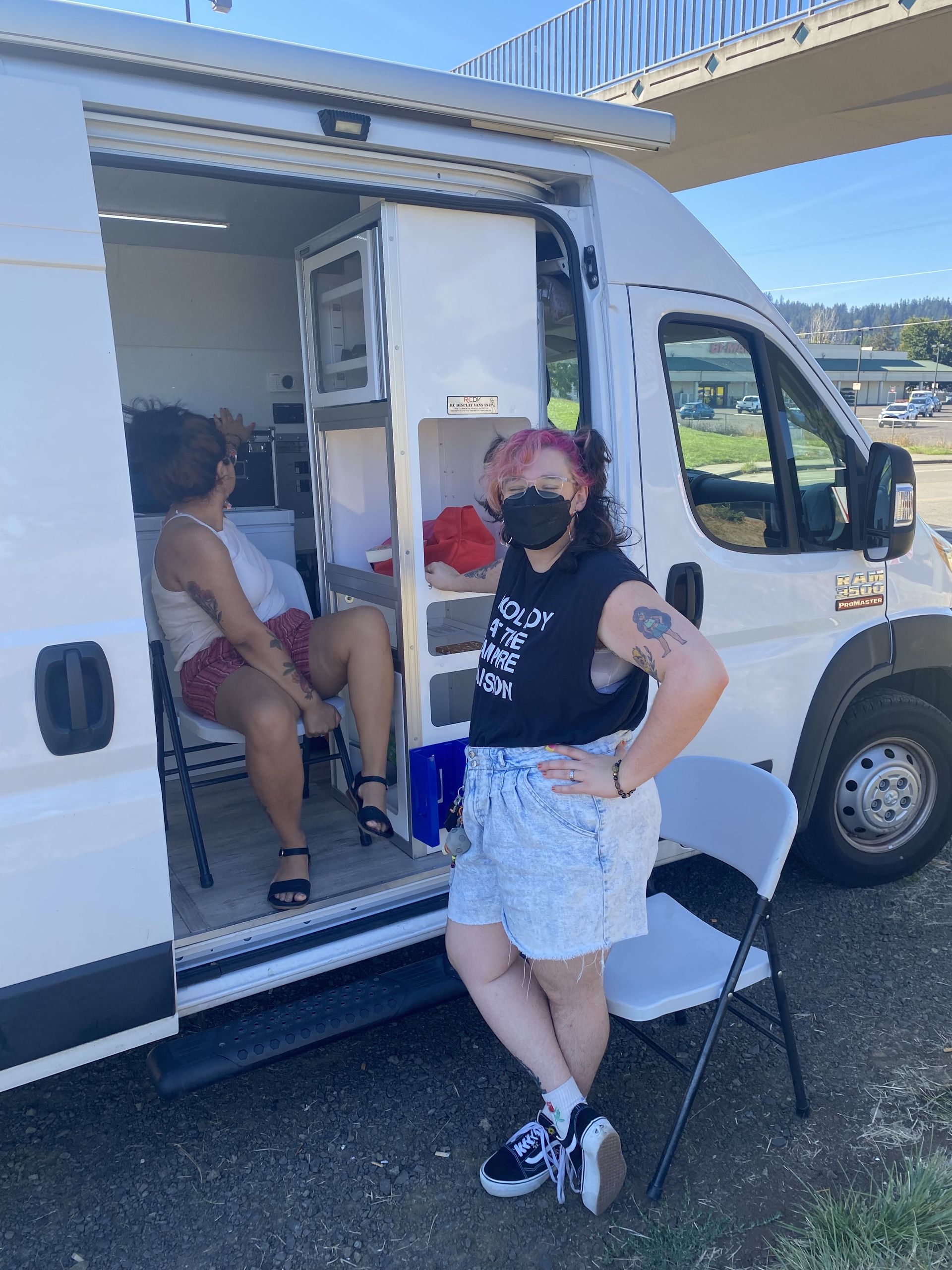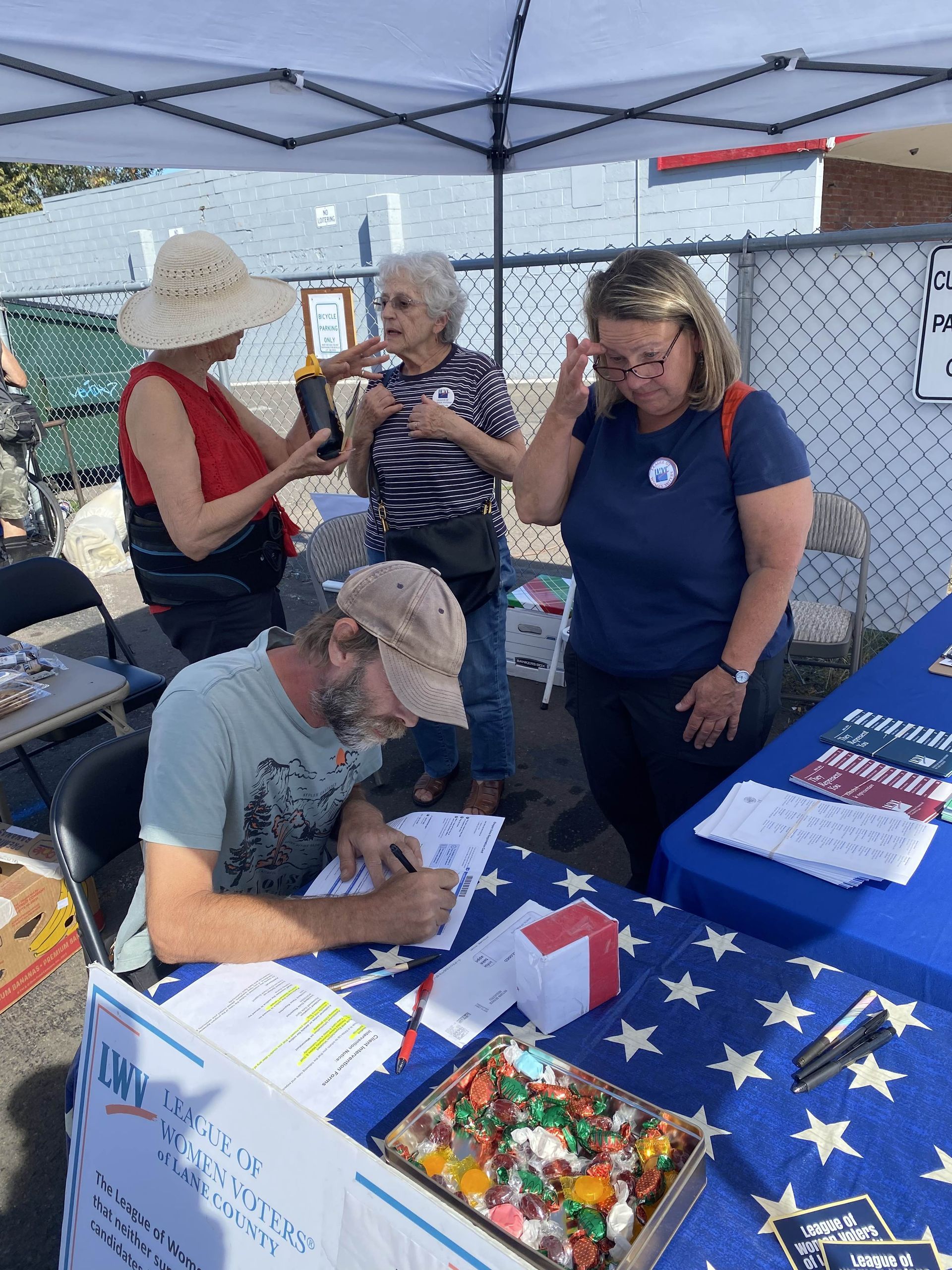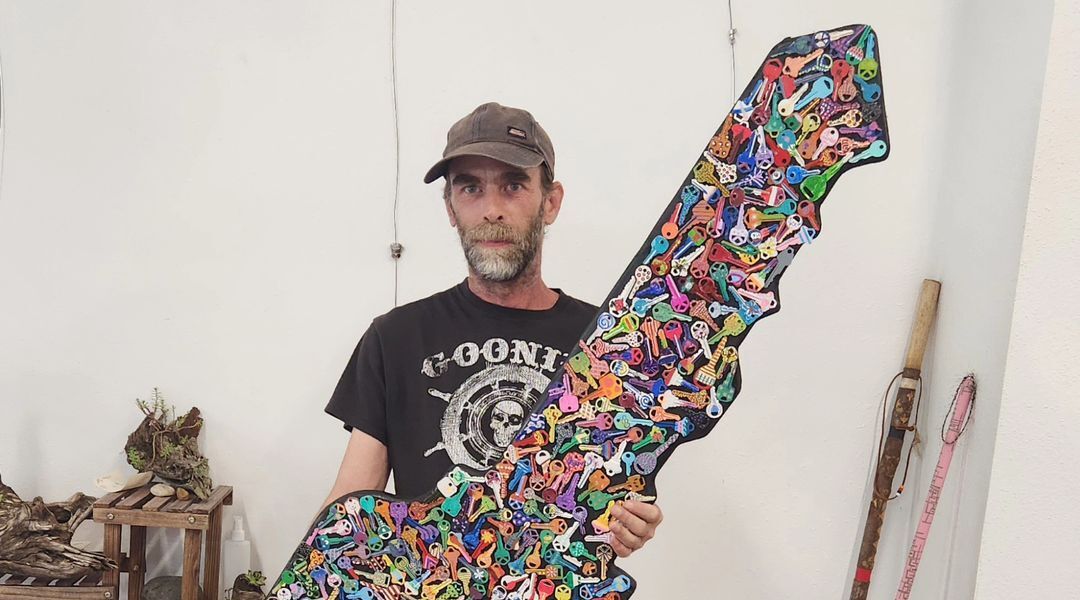“We were pretty worn out after a build, but it was a good tired. More volunteers on the crew has really made a big difference in how things get done.”
Guy and Jim got to know each other as volunteers in peace projects for CALC (Community Alliance for Lane County) and serving meals at Food for Lane County’s Dining Room. Their friendship continued as volunteers with CSS.
“Jim has been a really steady influence with the Hut Crew over the years,” Guy says. “He helps bring everybody together in a friendly, welcoming way.”
The actual construction of a hut is not complicated, but working with a changing group of volunteers does mean there’s a lot to coordinate.
“There’s not much of a hierarchy in how a Hut gets built,” Guy says. “As people learn, they just step up and see what’s needed next, and go for it. It’s kind of an organic process—and we have fun.”
The design has also evolved organically. For example, the first Huts were built with a heavy one-piece floor that took eight people to carry it. Floors are now constructed as two-piece units that slide together. The entire operation has become much more efficient. CSS has even published a Hut Manual with detailed illustration and specs.
But it’s the volunteers who make it all happen.
Barr Washburn is the CSS staff construction coordinator who oversees logistics and the overall planning of Huts and other infrastructure at the Safe Spots. He is impressed with the work of the volunteer Hut Crews.
“What really stands out big time is how much heart goes into their work,” Barr says. “I’ve been doing construction work with a lot of people over the years. But I’ve never been around such a friendly and upbeat group of volunteers as I see on the Hut Crews.”


